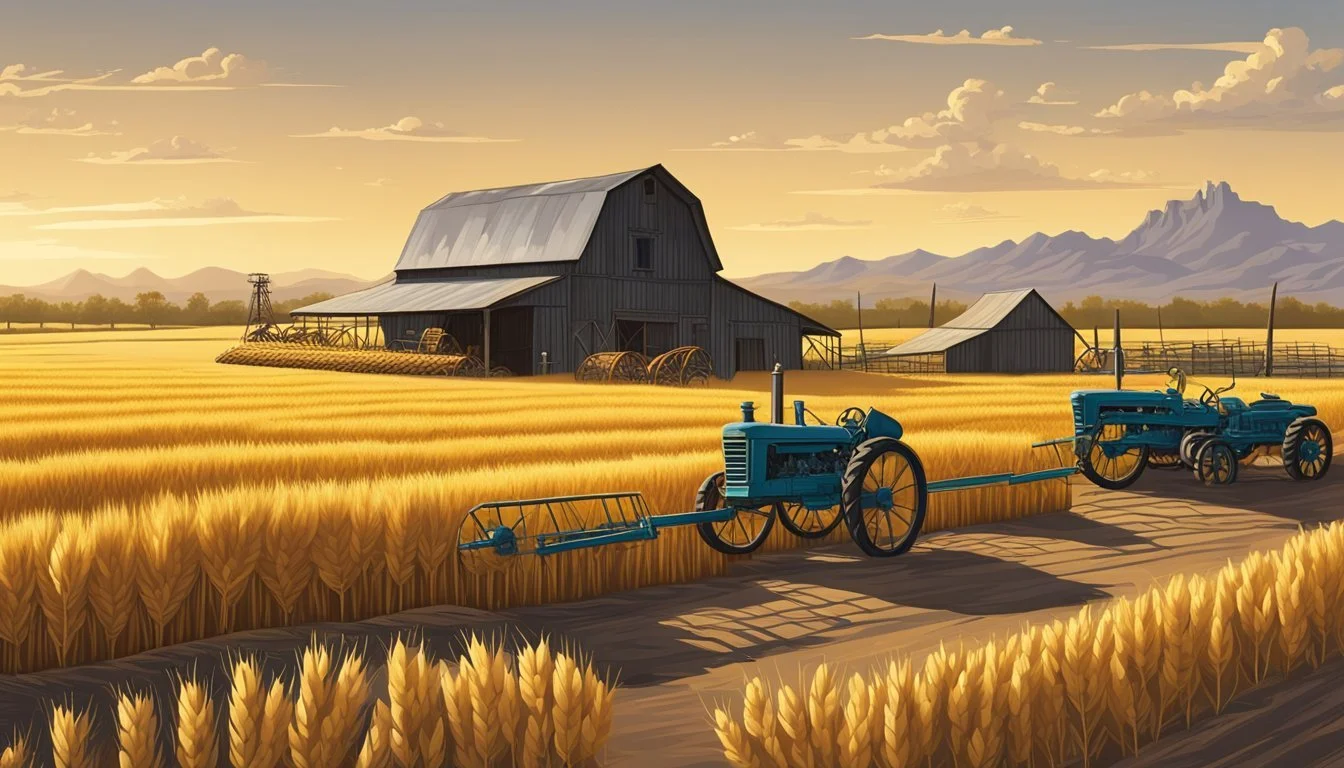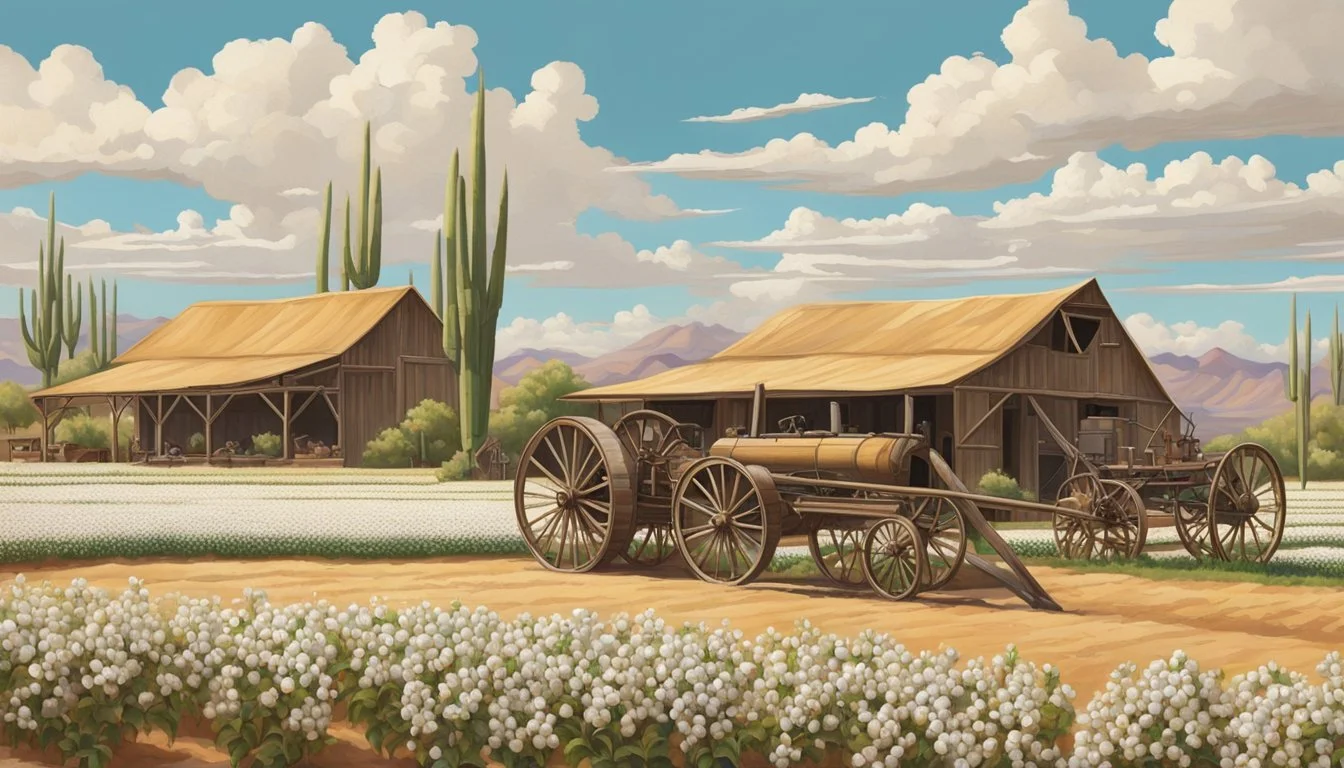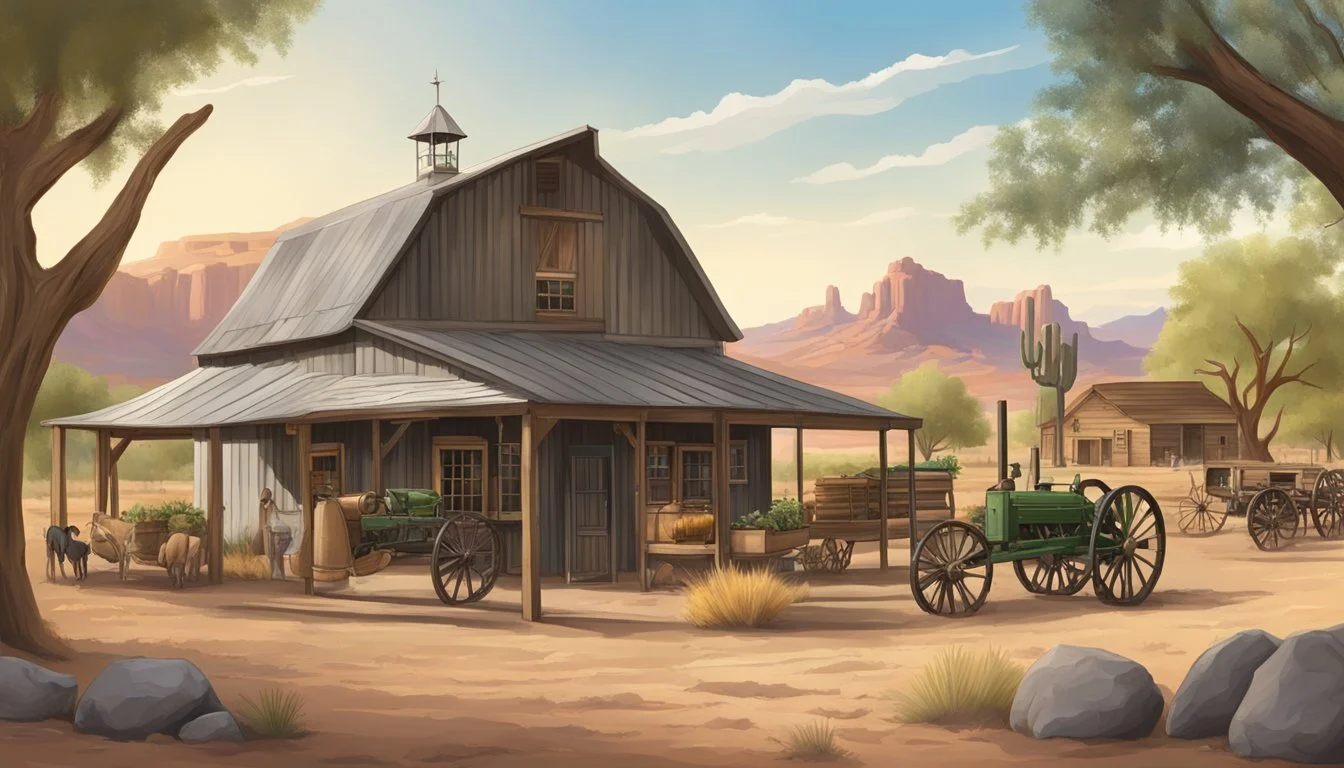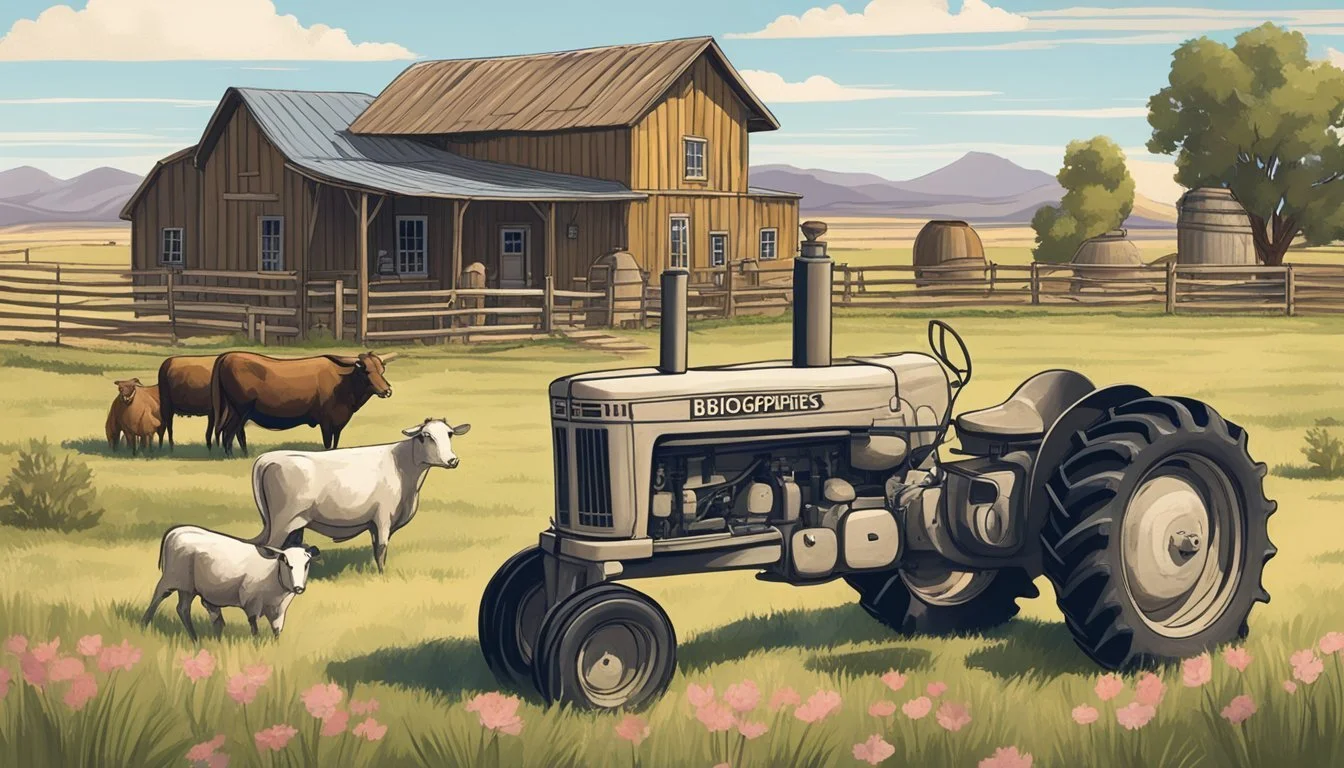Historical Farms and Agricultural Museums in Arizona
A Guide to Agrarian Heritage
Arizona is a state with a rich tapestry of historical narratives, especially those tied to the development of its agricultural sector. As a witness to the evolution of farming techniques and the resilience of its agrarian communities, the state prides itself on a selection of museums and heritage sites dedicated to preserving this history. Institutions like the Arizona Farm and Ranch Museum & Hall of Fame exemplify a commitment to showcasing the heritage and ongoing traditions of farming and ranching that are central to Arizona's identity.
The preservation of Arizona's agricultural past provides an immersive educational experience for individuals seeking to understand the state's development and the people who shaped its landscapes. The Association for Living History, Farm and Agricultural Museums (ALHFAM) plays a fundamental role in promoting this understanding through its support of living history techniques and programs, which display the day-to-day activities of historical farms authentically.
These institutions not only offer a window to the past but also engage visitors in the narratives of families and communities integral to the state's growth. Through meticulously preserved artifacts, restored farm buildings, and interactive educational programs, they contribute to Arizona's living history by connecting the present to a past that is foundational to the state's heritage and ongoing agricultural story.
Historical Context of Agriculture in Arizona
Arizona's agricultural history is deeply rooted in the practices of its indigenous people, shaped by Spanish influences, and transformed by the innovations of modern irrigation techniques.
Indigenous Farming Practices and Archaeology
The Hohokam, an ancient group indigenous to the Southwest, developed intricate irrigation networks for farming in the arid climate. Their ingenuity is evident through the remains of extensive canal systems that provided water for cultivating maize, beans, and squash. Archaeological finds such as trough metates used in grinding corn into flour and ceramics from prehistoric times offer valuable insights into early agricultural tools and production.
Spanish Influence and Colonial Farming
With the arrival of the Spanish in the region, new agricultural methods and crops were introduced. The Spanish brought cotton, sheep, and different farming techniques that altered the existing agricultural landscape. This influence extended beyond crop cultivation, impacting the social structure and economy in what is now the southwestern United States.
Transformation of Agriculture in the American Southwest
Following the expansion of the United States into the West, the "Wild West" saw significant changes in its agricultural practices. Settlers from various parts of the country and the world brought their farming skills and began to cultivate the land, adapting to the unique ecological challenges of the Southwest.
Revolutionizing Farming: The Introduction of Modern Irrigation
The 20th century ushered in an era of modern irrigation in Arizona, greatly expanding the state's agricultural capabilities. This systemic change facilitated the growth of more diverse crops on a larger scale, revolutionizing farming in the arid landscapes of the state. This development was foundational in shaping Arizona's agricultural economy into what it is today.
Preservation and Education through Museums
Historical farms and agricultural museums play a pivotal role in the preservation of local history and offer an array of educational opportunities. They serve as custodians of the land's legacy and provide interactive experiences that connect visitors with the agricultural past.
Role of Historical Farms and Agricultural Museums
Arizona's agricultural museums offer a window into the state's farming heritage. They safeguard the traditional equipment, buildings, and practices, ensuring that they remain an educational resource for future generations. Organizations like the Association for Living History, Farm and Agricultural Museums (ALHFAM) serve as a support system for these institutions.
Living History and Interactive Learning
Museums such as the Pioneer Living History Museum blend education with entertainment by offering interactive learning experiences. Attractions like a working blacksmith shop allow visitors to witness the skills and crafts of the past firsthand, making history tangible and engaging.
Collections and Exhibits: Legacy of the Land
Collections at these museums often showcase tools, machinery, and artifacts that tell the story of Arizona's agricultural evolution. Exhibits provide insights into how the land was cultivated and how such practices have shaped modern agriculture.
Arizona's Prominent Agricultural Museums
In Arizona, agricultural museums such as the Pioneer Living History Museum stand as primary repositories of the state's agrarian past. They not only display collections but also educate visitors about the unique heritage and traditions of local agriculture.
Community Involvement and Volunteer Opportunities
These museums thrive on community support and often rely on volunteers for operations. This presents opportunities for local residents to involve themselves in preserving their heritage and contribute to educational outreach.
Educational Programs and Field Trips
Programs offered by these museums align with school curriculums, offering students hands-on learning through field trips. This education outside the classroom helps to cement a practical understanding of historical farming techniques.
Special Events and Seasonal Celebrations
Seasonal celebrations and special events, including Easter festivities, bring history to life. These events highlight traditional seasonal activities and generate both interest and funds for ongoing preservation efforts.
Research and Preservation Efforts
Museums conduct research to continuously expand our knowledge of agrarian history. With support from entities like the National Park Service, they strive to preserve both tangible and intangible aspects of agricultural life.
Networking and Associations
Associations like ALHFAM provide valuable networking opportunities for museum members. They facilitate the exchange of resources and best practices between museums, organizations, and societies across the United States and beyond.
Funding and Financial Support for Museums
Financial support for these museums often comes from a mix of public funding, private donations, and grants. Programs such as those by the National Trust for Historic Preservation provide financial resources for preservation projects.
Future of Agricultural Museums: Sustainability and Technology
Looking ahead, agricultural museums are embracing sustainability and technology to enhance the visitor experience and reduce their environmental impact. Innovative exhibits may soon offer virtual reality experiences of historical farming, thanks to advancements in Mars research and other technologies.
Cultural Significance and Representations
Agricultural museums hold great cultural significance, representing the diverse cultures from Mexico to the United States that have contributed to the agricultural landscape. They celebrate the heritage and traditions that have shaped the nation.
Agricultural Museums Beyond Arizona: National and International Perspectives
Arizona's commitment to agricultural history reflects a broader trend. Globally, such institutions foster appreciation for the heritage and traditions of rural life, supported by international bodies and associations like ALHFAM and others.
Arizona's Farming Heritage and Society
Arizona's rich agricultural past is a testament to the endurance and diversity of its people. Historical farms and museums across the state serve as critical conduits for understanding Arizona's unique farming heritage and the societal contributions of its agriculturists.
Historical Farms as Community Centers
Throughout Arizona, historical farms have long served as community centers, bringing together members of society for markets, social gatherings, and educational events. These farms stand as landmarks where traditions are maintained and where individuals learn about the state's agrarian lineage.
Contributions of Farmers to Arizona's Identity
Arizona's identity is closely tied to its agriculture, including prominent crops like cotton which historically played a significant role in the state's economy. Farmers in Arizona have carved out a living from the land, contributing to both the state's heritage and its development.
Representing Diversity: Native, Hispanic, and Pioneer Cultures
The state's agricultural story is a tapestry woven from diverse threads – from the traditions of Native cultures who farmed in Mesoamerica to the influence of Spanish agricultural methods. Museums and farms capture the intersections of these cultures, showcasing the rich variety of farming techniques and heritage that exist in Arizona.
Preserving Traditional Skills and Knowledge
Educational programs and demonstrations at Arizona's agricultural museums and farms play a critical role in preserving traditional farming skills and knowledge for future generations. They offer a hands-on approach to understanding the state's farming history and the evolving practices that have sustained its people.
Biographies of Pioneers and Influential Figures
This section pays homage to the individuals and organizations that have profoundly influenced Arizona's agricultural landscape.
Farming Pioneers and Their Impact
** Justus von Liebig** made significant strides in agricultural chemistry, though not directly in Arizona, his influence reached far and wide including affecting agricultural practices in the state. His understanding of nutrients and mineral fertilization laid the groundwork for modern agricultural science.
In Arizona, Charles Trumbull Hayden is a notable pioneer, founding both the city of Tempe and its namesake flour mill, diversifying and strengthening the agricultural fabric of the state. His entrepreneurial spirit and contributions to Arizona's farming infrastructure were instrumental for future developments.
Influential Entities in Arizona Agriculture
The University of Arizona's College of Agriculture & Life Sciences represents a contemporary bastion of agricultural advancement, melding education with practice to direct the state's agricultural policy and innovation. The organization leads in research, shaping Arizona's agronomy.
The Arizona Farm Bureau, as a grassroots organization, advocates policies benefiting agriculture at the state and national levels. They serve as an influential voice for Arizona's farmers, ensuring a collective resonance in legislative corridors, thereby supporting the society's agrarian elite and the greater farming society through various initiatives and educational programs.
Exploring Agricultural Practices: Past and Present
Arizona's agricultural evolution is a tale of tradition and innovation. This section examines how practices have shifted from ancient methods to contemporary advancements, and how both continue to shape the state's agricultural landscape.
Traditional Farming Techniques
In the heart of the Southwest, traditional farming techniques passed down through generations have long been the cornerstone of agriculture. Indigenous tribes skillfully cultivated the "Three Sisters"—maize, beans, and squash—using a companion planting method that maximized yields and maintained soil health.
Modern Agricultural Innovations in Arizona
Arizona has embraced modern agricultural innovations, leveraging technology and science to optimize production. For instance, the use of precision farming methods allows growers to manage cotton and maize fields more efficiently, harnessing satellite imagery and advanced irrigation systems to conserve water—a precious resource in the arid state.
Comparison of Historical and Current Crop Cultivation
Traditional Crop Cultivation
Maize: Grown in mounds to facilitate water retention
Beans: Planted with maize, adding nitrogen to the soil
Squash: Shaded roots of other plants, deterring pests
Current Crop Cultivation
Maize/Cotton: Use of drip irrigation for water efficiency
Beans/Squash: Grown in rotational systems to prevent soil depletion
Comparing historical and current cultivation practices reveals the balance between respecting time-honored methods and embracing sustainable, innovative strategies to meet current demands.
Livestock Rearing: From Sheep to Cattle Ranching
Early settlers in Arizona raised sheep, taking advantage of the vast grasslands. Today, cattle ranching has risen in prominence, with ranchers applying both traditional skills and modern resources for herd management. They blend extensive knowledge of the land with contemporary education to sustainably manage livestock, ensuring the sector's resilience.






